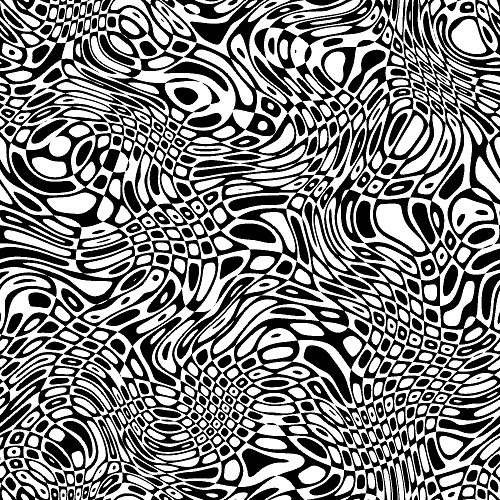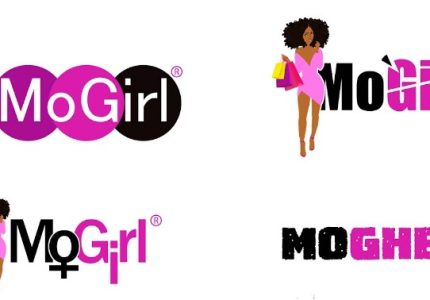Understanding the Principles of Graphic Design
Understanding the principles of graphic design is essential for creating visually appealing and effective digital and print materials. These fundamentals guide designers in organizing elements such as color, typography, and layout to communicate messages clearly and attractively. By mastering these concepts, designers can craft balanced, engaging, and impactful designs that resonate with their audience.
Balance and Symmetry
Understanding the principles of graphic design is essential for creating visually appealing and effective compositions. Two fundamental concepts within this field are balance and symmetry, which help create harmony and stability in a design. Balance refers to the distribution of visual weight within a layout, ensuring that no part feels overly heavy or neglected. Symmetry, a specific type of balance, involves mirroring elements on either side of an axis to achieve a sense of order and formality. Mastering these principles enables designers to guide viewers’ attention, evoke desired emotions, and produce layouts that are aesthetically pleasing and structurally sound.
Contrast and Emphasis
Understanding the principles of graphic design is essential for creating visually appealing and effective compositions. Among these principles, contrast and emphasis play a crucial role in guiding the viewer’s attention and communicating the intended message. Contrast involves using differences in color, size, shape, or texture to create visual interest and hierarchy within a design.
Emphasis, on the other hand, refers to techniques used to highlight the most important elements of a design, ensuring they stand out from the surrounding content. By carefully applying contrast and emphasis, designers can create engaging visuals that effectively convey their message and improve overall readability and visual balance. Mastering these principles is fundamental to producing professional and impactful graphic designs.
Alignment and Grid System
Understanding the principles of graphic design is essential for creating visually appealing and effective visuals. Alignment and grid systems play a crucial role in achieving balance, organization, and harmony in a design. Proper alignment ensures that elements are placed in a way that creates a clean, cohesive look, guiding the viewer’s eye smoothly across the design. The grid system provides a structured framework that helps designers align elements systematically, maintaining consistency and order. Using grids encourages uniform spacing, proportionality, and a clear visual hierarchy, making designs more professional and easier to navigate. Mastering these foundational principles allows designers to communicate their message clearly and create aesthetically pleasing compositions that resonate with their audience.
Repetition and Consistency
Understanding the principles of graphic design is essential for creating visually appealing and functional work. Repetition and consistency are two key principles that help establish a cohesive and professional look. Repetition involves using the same elements, such as colors, fonts, or shapes, throughout a design to create rhythm and unity. Consistency ensures that these elements are applied uniformly across different parts of a project, reinforcing the overall aesthetic and making the design easier to comprehend. Together, repetition and consistency help guide the viewer’s eye, improve readability, and strengthen brand identity, making them fundamental concepts in graphic design basics.
Color Theory and Usage
Color theory is a fundamental aspect of graphic design that explores how colors interact and influence viewer perception. Understanding the principles of color harmony, contrast, and psychology helps designers create visually appealing and effective compositions. Proper use of color enhances communication, sets mood, and guides viewers through a design, making it an essential skill for anyone involved in visual arts.
Color Wheel Basics
Color theory and usage are fundamental components of graphic design, helping designers create visually appealing and effective compositions. Understanding how colors interact, evoke emotions, and communicate messages is essential for successful design projects. The color wheel is a vital tool that organizes colors into a circular format, illustrating relationships and harmony between hues.
The color wheel is divided into primary, secondary, and tertiary colors. Primary colors—red, blue, and yellow—are the foundation from which other colors are derived. Secondary colors—orange, green, and purple—are created by mixing two primary colors. Tertiary colors result from mixing a primary color with a neighboring secondary color, producing hues like red-orange or blue-green.
Designers use color schemes based on the color wheel to achieve desired visual effects. Complementary colors are opposite each other on the wheel, offering high contrast and vibrancy when paired. Analogous colors are next to each other, providing a harmonious and cohesive look. Triadic schemes involve three colors evenly spaced around the wheel, offering balanced vibrancy. Monochromatic schemes utilize varying shades and tints of a single hue for subtlety and sophistication.
Effective use of color in graphic design also considers factors like contrast, saturation, and hue to guide viewers’ attention and evoke specific emotions. By mastering color theory and understanding the basics of the color wheel, designers can create compelling visuals that communicate their messages clearly and aesthetically.
Color Schemes and Harmony
Color theory and usage are fundamental components of graphic design, helping designers communicate messages effectively through visual appeal. Understanding how colors interact, evoke emotions, and influence perceptions allows for the creation of compelling and coherent designs. Color harmony, achieved through carefully selected color schemes, ensures visual balance and aesthetic appeal.
Color schemes refer to specific combinations of colors that work well together within a design. Common schemes include complementary, analogous, triadic, split-complementary, and tetradic, each offering different visual effects and emotional impacts. For example, complementary schemes pair colors opposite each other on the color wheel, creating vibrant contrast, while analogous schemes use neighboring colors for a harmonious and calming effect.
Utilizing color harmony in graphic design involves selecting palettes that enhance readability, brand identity, and emotional resonance. It requires a deliberate approach to color contrast, saturation, and brightness, ensuring that the design not only appears pleasing but also effectively guides viewer attention and conveys the intended message. Mastery of color theory and schemes is essential for creating visually engaging and impactful graphic compositions.
Psychology of Colors
Color theory and usage are fundamental components of graphic design, influencing how audiences perceive and engage with visual content. Understanding the psychology of colors helps designers evoke specific emotions and communicate messages more effectively. Colors are not just aesthetic choices; they serve as powerful tools to create balance, focus, and mood within a design.
The psychology of colors is based on cultural associations and subconscious reactions, making it essential for designers to select colors that align with the intended message or brand identity. For example, blue often conveys trust and professionalism, while red can evoke excitement or urgency. Mastering color theory involves knowing how colors interact, complement, or contrast with each other to produce harmonious or dynamic visuals.
- Red: Stimulates energy, passion, and urgency; often used in sales and clearance signs.
- Blue: Creates a sense of calm, trustworthiness, and reliability; common in corporate branding.
- Yellow: Conveys happiness, optimism, and attention; effective for attracting the eye in advertising.
- Green: Represents nature, growth, and health; frequently employed in eco-friendly product designs.
- Purple: Signifies luxury, creativity, and wisdom; popular in beauty and high-end branding.
Typography Fundamentals
Typography is a fundamental element of graphic design that involves the art and technique of arranging type to make written language visually appealing and easily readable. It encompasses principles such as font selection, spacing, hierarchy, and alignment, which work together to convey the message effectively. Mastering typography helps designers create clear, engaging, and aesthetically pleasing compositions that enhance overall communication.
Font Styles and Types
Typography is a fundamental element in graphic design that focuses on the arrangement and style of text to communicate messages effectively. It encompasses various aspects such as font styles, types, sizes, and spacing to create visually appealing and readable content. Understanding typography helps designers craft designs that evoke the right emotions and improve user experience.
Font styles refer to the variations within a typeface that alter its appearance, including bold, italic, underline, and regular styles. These styles help emphasize specific parts of the text, create hierarchy, and enhance readability. Proper use of font styles ensures the message is clear and the design remains balanced.
Types of fonts are generally categorized into several groups: serif, sans-serif, script, display, and monospace. Serif fonts have small lines or strokes at the ends of characters, making them suitable for print and extensive text. Sans-serif fonts lack these lines and appear cleaner and more modern, often used for digital interfaces. Script fonts imitate handwriting and are often used for decorative purposes, while display fonts are designed to attract attention and are used for headlines or logos. Monospace fonts have equal spacing between characters, commonly used in coding and technical contexts.
Hierarchy and Readability
Understanding typography fundamentals, hierarchy, and readability is essential in graphic design to create visually appealing and effective communication. Proper use of typography enhances the user experience by guiding the viewer’s eye and emphasizing key information.
- Typography Fundamentals: This includes choosing appropriate fonts, understanding typefaces, and learning about line length, spacing, and alignment to ensure clarity and consistency across design materials.
- Hierarchy: Establishing a clear visual order by varying font sizes, weights, and styles helps prioritize content. Hierarchy directs the viewer’s attention and makes the message easy to navigate.
- Readability: Ensuring text is easy to read involves selecting legible fonts, adequate contrast, and appropriate line spacing. Proper readability is crucial for effective communication and user engagement.
Spacing and Kerning
Understanding typography fundamentals, including spacing and kerning, is essential in creating visually appealing and effective graphic designs. Proper management of these elements ensures readability, clarity, and a harmonious layout.
- Typography Fundamentals: Focus on the selection of typefaces, font sizes, and line lengths to communicate the intended message clearly. Good typography enhances the overall aesthetic and guides the viewer’s attention.
- Spacing: Refers to the space between lines (leading), letters (tracking), and overall elements within the layout. Proper spacing prevents clutter and improves legibility.
- Kerning: The adjustment of space between individual character pairs to achieve visual balance. Correct kerning prevents awkward gaps and creates a smooth, professional appearance.
Layout and Composition
Layout and composition are fundamental elements of graphic design that involve arranging visual components to create an effective and aesthetically pleasing design. These principles guide the placement of text, images, and other elements to communicate a message clearly and attractively. Understanding how to balance and organize visual elements is essential for producing compelling and professional designs that engage viewers and convey information effectively.
Grid Structures
Grid structures are fundamental to effective layout and composition in graphic design, providing a consistent framework that helps organize content systematically. They enable designers to align elements precisely, creating visual harmony and balance across a design. Using grids allows for easier content placement, ensuring that text, images, and other components work together cohesively. Well-implemented grid structures improve readability and guide the viewer’s eye smoothly through the design. They serve as a blueprint that enhances both aesthetic appeal and functional usability, making designs more professional and polished.
Hierarchy and Visual Flow
Layout and Composition, Hierarchy, and Visual Flow are fundamental principles in graphic design that help create effective and engaging visuals. Proper layout ensures that all elements are organized in a way that guides the viewer’s eye naturally across the design, making the content easy to understand and aesthetically pleasing.
- Hierarchy: Establishes the importance of elements within the design, allowing viewers to identify key messages quickly. This is achieved through size, color, contrast, and placement, emphasizing what needs to be noticed first.
- Visual Flow: The path the viewer’s eye follows as they explore the design. Good visual flow leads the viewer seamlessly from one element to the next, maintaining engagement and delivering the intended message effectively.
- Layout and Composition: Refers to the arrangement of text, images, and other components within the space. A strong composition balances elements harmoniously, creating a cohesive and professional look that enhances readability and visual interest.
White Space Utilization
Effective layout and composition are fundamental to creating visually appealing and functional graphic designs. Proper use of white space, also known as negative space, enhances readability and directs viewers’ attention to key elements. Balancing content with ample white space prevents clutter, allowing the design to breathe and fostering a sense of harmony.
Key principles of white space utilization include:
- Strategic placement of elements to guide the viewer’s eye naturally across the design.
- Using white space to create contrast, making important content stand out.
- Ensuring sufficient spacing between text blocks, images, and other design components for clarity.
- Avoiding overcrowding to maintain simplicity and elegance.
- Leveraging white space to improve overall readability and user experience.
Imagery and Iconography
Imagery and iconography are fundamental elements in graphic design that help communicate ideas visually. They utilize images, symbols, and visual representations to convey messages quickly and effectively. Understanding how to use compelling imagery and meaningful icons enhances the overall impact of a design, making it more engaging and easier to interpret for viewers.

Photography Selection
Imagery and iconography play a crucial role in graphic design by conveying messages quickly and effectively through visual symbols. Selecting the right images or icons involves understanding the target audience, message, and overall aesthetic. Photographic selection should complement the design’s purpose, conveying emotion or information with clarity. A thoughtful approach ensures that visuals enhance the communication without overwhelming the viewer, creating a cohesive and impactful design.
Icon Design Principles
Imagery and iconography are fundamental elements in graphic design, helping to communicate messages quickly and effectively. Well-chosen images and icons can convey complex ideas, evoke emotions, and create visual interest, making them essential tools for designers. Icon design principles ensure these visual elements are clear, functional, and aesthetically pleasing, contributing to cohesive and user-friendly designs.
- Clarity: Icons should be easily recognizable and understandable at a glance.
- Simplicity: Use minimal details to ensure icons are scalable and legible across different sizes and devices.
- Consistency: Maintain a uniform style, stroke width, and color palette to create harmony within a design.
- Relevance: The imagery or iconography must align with the message or brand identity it represents.
- Functionality: Icons should support user interaction and guide navigation without confusion.
- Aesthetic Balance: Ensure visual balance and proportion to make icons pleasing and harmonious within the overall design.
Using Visual Elements Effectively
In graphic design, imagery and iconography are powerful tools used to communicate messages quickly and effectively. By selecting appropriate visual elements, designers can evoke emotions, clarify complex ideas, and create memorable impressions. Using visual elements skillfully involves understanding their symbolism, composition, and context to ensure they resonate with the intended audience. When incorporated thoughtfully, imagery and icons enhance the overall aesthetic and functionality of a design.
- Choose images and icons that align with the message and tone of the project.
- Ensure visuals are clear, high-quality, and appropriately sized for their purpose.
- Use consistent icon styles to maintain visual harmony and coherence.
- Apply contrast and color strategically to highlight important elements and improve readability.
- Balance visual elements within the layout to guide the viewer’s eye naturally across the design.
- Avoid clutter by limiting the number of images and icons, focusing on essential visuals.
Tools and Software
Tools and software play a crucial role in the world of graphic design, providing artists and designers with the necessary resources to bring their creative visions to life. From digital drawing tablets to advanced editing programs, these tools help streamline the design process, enhance precision, and enable the creation of stunning visual content. Understanding the essentials of graphic design tools and software is fundamental for anyone looking to develop their skills in this vibrant and dynamic field.
Popular Graphic Design Programs
Tools and software play a crucial role in the world of graphic design, enabling designers to transform their ideas into visual masterpieces. With a variety of programs available, choosing the right tool can significantly enhance productivity and creativity. Popular graphic design programs include Adobe Photoshop, known for its powerful image editing capabilities; Adobe Illustrator, ideal for creating vector graphics and illustrations; CorelDRAW, a versatile vector graphic editor; and Canva, which offers user-friendly templates for quick designs. Other notable software includes Sketch for web and app design, and Affinity Designer, an affordable alternative to premium programs. Mastering these tools is fundamental to developing strong design skills and producing professional-quality work.
Vector vs Raster Graphics
Tools and software play a crucial role in graphic design, helping designers bring their ideas to life with precision and creativity. Choosing the right software depends on whether the project involves creating vector or raster graphics. Vector graphics are composed of paths defined by mathematical equations, making them scalable without losing quality. Common vector software includes Adobe Illustrator and CorelDRAW, which are ideal for logos, icons, and illustrations. Raster graphics, on the other hand, are made up of pixels and are best suited for detailed images like photographs. Popular raster software includes Adobe Photoshop and GIMP. Understanding the differences between vector and raster graphics is essential for selecting the appropriate tools and achieving the desired visual results in design projects.
Design Workflow and File Management
Tools and software are essential components of the graphic design process, providing designers with the necessary features to create and refine their work. Popular programs include Adobe Photoshop, Illustrator, and InDesign, each catering to different aspects of design such as photo editing, vector graphics, and layout development. Staying updated with the latest software versions and exploring new tools can greatly enhance productivity and creativity.
Design workflow refers to the structured approach designers follow to transform ideas into finished products. It typically involves stages such as research, brainstorming, sketching, digital creation, and revisions. A well-organized workflow ensures efficiency, allows for effective time management, and helps maintain consistent quality throughout the project. Using project timelines and checklists can streamline this process.
File management is a critical aspect of graphic design that involves organizing and maintaining all project-related files securely. Proper naming conventions, folder structures, and version control help prevent data loss and facilitate easier collaboration. Backing up files regularly and archiving completed projects ensure that assets are preserved for future reference or revisions, maintaining a smooth and professional workflow.





